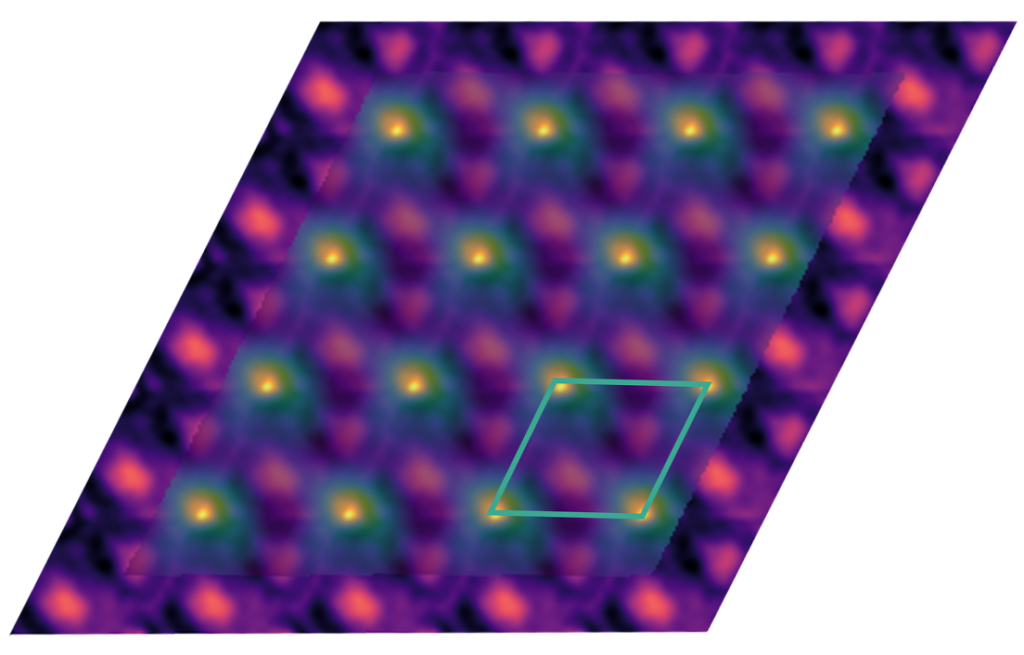Adapted from this Berkeley Lab press release

Excitons are drawing attention as possible quantum bits (qubits) in tomorrow’s quantum computers and are central to optoelectronics and energy-harvesting processes. However, these charge-neutral quasiparticles, which exist in semiconductors and other materials, are notoriously difficult to confine and manipulate. Now, for the first time, researchers have created and directly observed highly localized excitons confined in simple stacks of atomically thin materials. The work confirms theoretical predictions and opens new avenues for controlling excitons with custom-built materials.
“The idea that you can localize excitons on specific lattice sites by simply stacking these 2D materials is exciting because it has a variety of applications, from designer optoelectronic devices to materials for quantum information science,” said Archana Raja, co-lead of the project whose group led the device fabrication and optical spectroscopy characterization.
The team fabricated devices by stacking layers of tungsten disulfide (WS2) and tungsten diselenide (WSe2). A small mismatch in the spacing of atoms in the two materials gave rise to a moiré superlattice, a larger periodic pattern that arises from the overlap of two smaller patterns with similar but not identical spacing of elements. Using state-of-the-art electron microscopy tools, the researchers collected structural and spectroscopic data on the devices, combining information from hundreds of measurements to determine the probable locations of excitons.
Interested in Becoming a Foundry User?
Join our collaborative, multidisciplinary environment.
Learn more >
“We used basically all the most advanced capabilities on our most advanced microscope to do this experiment,” said Peter Ercius, who led the imaging work at the National Center for Electron Microscopy. “We were pushing the boundaries of everything we can do, from making the sample to analyzing the sample to doing the theory.”
Theoretical calculations, led by Steven Louie, a faculty senior scientist at Berkeley Lab and distinguished professor of physics at UC Berkeley, revealed that large atomic reconstructions take place in the stacked materials, which modulate the electronic structure to form a periodic array of “traps” where excitons become localized. Discovery of this direct relationship between the structural changes and the localization of excitons overturns prior understanding of these systems and establishes a new approach to designing optoelectronic materials.
Read the full press release

